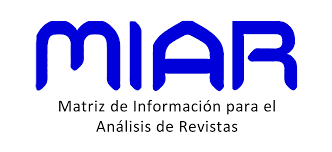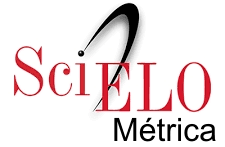Epidemio-molecular characterization of Clostridioides difficile infection in hospitalized patients with diarrhea in health institutions. 2019
DOI:
https://doi.org/10.18004/mem.iics/1812-9528/2023.e21122305Keywords:
Clostridioides difficile, infection, epidemiology, antimicrobials, clonal strainsAbstract
Clostridioides difficile infection is one of the main causes of nosocomial diarrhea in hospitals worldwide, associated with broad-spectrum antibiotics. Descriptive, retrospective, cross-sectional, census-type study. Two hundred eighty-one samples from patients hospitalized with the infection were studied, sociodemographic and clinical characteristics were analyzed and the pathogen was characterized molecularly. As a result, patients with the infection had a median age of 64 years and 61.5% male. The average presentation of diarrhea was 5 days, antimicrobial treatment 8 days and hospitalization 15 days. Ninety four percent had previous antimicrobial treatment, and 6% were exposed to some risk factor. The most commonly used antimicrobials alone or in combination were beta-lactams, fluoroquinolones, vancomycin, and carbapenems. The hospitalization areas with the highest frequency of presentation of the infection were the Clinical Medicine, Traumatology, Geriatrics and Intensive Care Unit units. The prevalence of toxigenic C. difficile was 14%, and of this frequency, 100% presented TcdA and TcdB toxins, with the absence of binary toxins and deletion of the tcdC gene. The presence of clonal groups was verified in the same hospitalization unit and the same health institution. All the strains were susceptible to the antibiotics of choice for the infection. The prevalence of infection and the presence of clonal profiles detected reveal the need for improvement of the infection control system, as well as of the strengthening and surveillance of antimicrobial resistance.
Downloads
References
Rodríguez D, Mirelisb B, Navarro F. Infecciones producidas por Clostridium difficile. Enferm Infecc Microbiol Clin. 2013; 31(4): 254. doi: 10.1016/j.eimc.2012.12.010
Becerra M, Ospina S, León S, Yajaira D. Factores de riesgo para la infección de Clostridium difficile. Infectio. 2011; 15(4): 220-26. https://doi.org/10.1016/S0123-9392(11)70735-4
Meyer L, Espinoza R, Quera R. Clostridium difficile. Epidemiología, Diagnóstico Y Estrategias Terapéuticas. Infection: Epidemiology, Diagnostic And Therapeutic Strategies. Rev. Med. Clin. Condes.2014; 25(3) 473-84. https://doi.org/10.1016/S0716-8640(14)70064-1
Pérez M, Hurtado A, Couto I, Gutiérrez J, Seoane L, Suárez JM, et al. Abordaje multidisciplinario de la infección por Clostridium difficile. Rev. chil. infectol. 2013; 30(2): 165-85.
Freeman J, Bauer MP, Baines SD, Corver J, Fawley WN, Goorhuis B, et al. The changing epidemiology of Clostridium difficile infections. Clin Microbiol Rev. 2010; 23(3): 529-49. doi: 10.1128/CMR.00082-09. PMID: 20610822; PMCID: PMC2901659
Debast SB, Bauer M, Kuijper. Updating the guidance document for the treatment of Clostridium difficile infection. European Society of Clinical Microbiology and Infectio us Diseases. Clinical Microbioland infection. 2014; 20(2). doi: 10.1111/1469-0691.12418.
Balassiano I, Yates E, Domingues R, Ferreira E. Clostridium difficile: a problem of concern in developed countries and still a mystery in Journal of Medical Microbiology. 2012; 61, 169-79. doi: 10.1099/jmm.0.037077-0.
Asencio A, Monge D. Epidemiología de la infección por Clostridium difficile en España. Enferm Infecc Microbiol Clin. 2012; 30(6): 333-7. doi: 10.1016/j.eimc.2011.09.010
Wroblewski D, Hannett GE, Bopp DJ, Dumyati GK, Halse TA, Dumas NB, et al. Rapid molecular characterization of Clostridium difficile and assessment of populations of C. difficile in stool specimens. J Clin Microbiol. 2009; 47(7): 2142-8. doi: 10.1128/JCM.02498-08. PMID: 19403775; PMCID: PMC2708487
Deshpande A, Pasupuleti V, Rolston DDK, Jain A, Deshpande N, Pant C, et al. Diagnostic accuracy of realtime polymerase chain reaction in detection of Clostridium difficile in the stool samples of patients with suspected Clostridium difficile infection. Clin Infect Dis. 2011; 53: e8190. https:/doi.org/10.1093/cid/cir505
Griffiths D, Fawley W, Kachrimanidou M, Bowden R, Crook DW. Multilocus sequence typing of Clostridium difficile. J Clin Microbiol. 2010;48(3):770-8. doi: 10.1128/JCM.01796-09. PMID: 20042623; PMCID: PMC2832416.
Lemee L, Dhalluin A, Pestel-Caron M, Lemeland JF, Pons JL. Multilocus sequence typing analysis of human and animal Clostridium difficile isolates of various toxigenic types. Journal of clinical microbiology. 2004; 42: 2609-17. doi: 10.1128/JCM.42.6.2609-2617.2004.
Persson S, Torpdahl M, Olsen KE. New multiplex PCR method for the detection of Clostridium difficile toxin A (tcdA) and toxin B (tcdB) and the binary toxin (cdtA/cdtB) genes applied to a Danish strain collection. Clin Microbiol Infect 2008; 14: 1057-64. doi: 10.1111/j.1469-0691.2008.02092.x
Gebreyes WA, Adkins PR. The use of pulsed-field gel electrophoresis for genotyping of Clostridium difficile. Methods Mol Biol. 2015;1301:95-101. doi: 10.1007/978-1-4939-2599-5_9. PMID: 25862051.
CLSI. Methods for Antimicrobial Susceptibility Testing of Anaerobic Bacteria. 9th ed. CLSI standard M11. Wayne, PA: Clinical and Laboratory Standards Institute; 2018.
Legaria MC, Lumelsky G, Rosetti S. Clostridium difficile-associated diarrhea from a general hospital in Argentina. Anaerobe. 2003; 9(3):113-6. doi: 10.1016/S1075-9964(03)00088-X. PMID: 16887697.
Balassiano I, Dos Santos-Filho J, de Oliveira MP, Ramos MC, Japiassu AM, et al. An outbreak case of Clostridium difficile-associated diarrhea among elderly inpatients of an intensive care unit of a tertiary hospital in Rio de Janeiro, Brazil. Diagn Microbiol Infect Dis. 2010; 68(4): 449-55. doi: 10.1016/j.diagmicrobio.2010.07.017.
Garcia C, Samalvides F, Vidal M, Gotuzzo E, Dupont HL. Epidemiology of Clostridium difficile-associated diarrhea in a Peruvian tertiary care hospital. Am J Trop Med Hyg. 2007; 77(5): 802-5. PMID: 17984329
Alvarez LM, González DR, Briceño LI, Cofre DC, Labarca LJ, Vial CP, et al. Diagnóstico de diarrea por Clostridium difficile: en busca de un enfoque clínico más eficiente. Rev méd Chile [Internet]. junio de 2001 [citado 18 de abril de 2023];129(6). Disponible en: Disponible en: http://www.scielo.cl/scielo.php?script=sci_arttext&pid=S0034-98872001000600004&lng=en&nrm=iso&tlng=en . Disponible en: http://www.scielo.cl/scielo.php?script=sci_arttext&pid=S0034-98872001000600004&lng=en&nrm=iso&tlng=en. http://dx.doi.org/10.4067/S0034-98872001000600004 .
Putsathit P, Maneerattanaporn M, Piewngam P, Kiratisin P, Riley TV. Prevalence and molecular epidemiology of Clostridium difficile infection in Thailand. New Microbes New Infect 2017; 15:27-32. https://doi.org/10.1016/j.nmni.2016.10.004
Álvarez S, Blanco JL, Peláez T, Astorga RJ, Harmanus C, Kuijper E, et al. High prevalence of the epidemic Clostridium difficile PCR ribotype 078 in Iberian free-range pigs. Res Vet Sci. 2013; 95(2): 358-61. doi: 10.1016/j.rvsc.2013.06.021.
Orrego M, Weiler N, Martínez M. Detección de Clostridioides difficile toxigénico a partir de muestras diarreicas por reacción en cadena de la polimerasa, en pacientes hospitalizados en Paraguay. Periodo 2016-2018. Mem. Inst. Investig. Cienc. Salud. 2020; 18(1): 55-60. doi:10.18004/mem.iics/1812-9528/2020.018.01.55-060
Gardilcic M, Fica A, Chang M, Llanos C, Luzoro A. Diarrea asociada a Clostridium difficile en un hospital de adultos: Estudio descriptivo. Rev. chil. infectol. 2000; 17(4): 307-12. http://dx.doi.org/10.4067/S0716-10182000000400005
Fernández-Canigia L, Nazar J, Arce M, Dadamio J, Smayevsky J, Bianchini H, et al. Clostridium difficile diarrhea: Frequency of detection in a medical center in Buenos Aires, Argentina. Rev Argent Microbiol. 2001; 33(2):101-107. PMID: 11494752
Liao C, Ko W, Lu J, Hsueh P. Characterizations of clinical isolates of Clostridium difficile by toxin genotypes and by susceptibility to 12 antimicrobial agents, including fidaxomicin (OPT-80) and rifaximin: a multicenter study in Taiwan. Antimicrob Agents Chemother 2015; 56: 3943-9. https://doi.org/10.1128/AAC.00191-12
Marcon AP, Gamba MA, Vianna LA. Nosocomial diarrhea in the intensive care unit. Braz J Infect Dis. 2006 Dec; 10(6):384-9. doi: 10.1590/s1413-86702006000600005. PMID: 17420910.
Pépin J, Saheb N, Coulombe MA, Alary ME, Corriveau MP, Authier S, et al. Emergence of fluoroquinolones as the predominant risk factor for Clostridium difficile-associated diarrhea: a cohort study during an epidemic in Quebec. Clin Infect Dis. 2005; 41(9): 1254-60. 10.1086/496986. PMID: 16206099.
Camacho-Ortiz A, Galindo A, Rancel A, Macías A, Lamothe-Molina P, Ponce de León-Garduño A, et al. Factors associated with Clostridium difficile disease in a tertiary-care medical institution in Mexico: A case-control study. Rev Invest Clin 2009; 61: 371-7. PMID: 20184096.
Dias M, Yamashiro J, Borrasca V, Stempliuk V, Araujo M, Costa SF, et al. Pseudo-Outbreak of Clostridium difficile associated diarrhea in a tertiary care hospital. Rev Ins Med Trop Sao Paolo. 2010; 52, 133-7. https://doi.org/10.1590/S0036-46652010000300004
Falces I, Troyano P, García S, Baquero F, Mellado MJ, García J. Detection of toxigenic Clostridium difficile in paediatric patients. Enferm Infecc Microbiol Clin (Engl Ed). 2018 Jun-Jul; 36(6): 357-61. doi: 10.1016/j.eimc.2017.05.006. PMID: 28689671.
Monge D, Morosini M, Millán I, Pérez Canosa C, Manso M, Guzman MF, et al. Factores de riesgo de infección por Clostridium difficile en pacientes hospitalizados [Risk factors for Clostridium difficile infections in hospitalized patients]. Med Clin (Barc). 2011; 19; 137(13): 575-80. doi: 10.1016/j.medcli.2010.12.026.
Tian T, Zhao J, Yang J, Qiang C, Li Zr, Chen J, et al. Molecular Characterization of Clostridium difficile Isolates from Human Subjects and the Environment. PLoS ONE, 2016 11(3): e0151964. doi:10.1371/journal.pone.0151964
Ferreira CE, Nakano V, Durigon EL, Avila-Campos MJ. Prevalence of Clostridium spp. and Clostridium difficile in children with acute diarrhea in São Paulo city, Brazil. Mem Inst Oswaldo Cruz. 2003; 98(4): 451-4. 10.1590/s0074-02762003000400003.
Loo VG, Poirier L, Miller MA, Oughton M, Libman MD, Michaud S, et al. A predominantly clonal multi-institutional outbreak of Clostridium difficile-associated diarrhea with high morbidity and mortality. N Engl J Med. 2005; 353(23): 2442-9. Doi: 10.1056/NEJMoa051639.
Pinto LJF, Alcides APP, Ferreira EO, Avelar KES, Sabrá A, Domingues RMCP, et al. Incidence and importance of Clostridium difficile in pediatrics diarrhea in Brazil. J Med Microbiol. 2003; 52(12): 1095-1099. doi: 10.1099/jmm.0.05308-0. PMID: 14614068.
Alcides A, Brazier J, Pinto L. Balassiano IT, Boente RF, de Paula GR, et al. New PCR ribotypes of Clostridium difficile detected in children in Brazil. Antonie van Leeuwenhoek. 2007; 92:53-9. https://doi.org/10.1007/s10482-006-9134-2
Peláez T, Alcalá L, Alonso R, Martín-López A, García-Arias V, Marín M, et al. In vitro activity of ramoplanin against Clostridium difficile, including strains with reduced susceptibility to vancomycin or with resistance to metronidazole. Antimicrob Agents Chemother 2005; 49: 1157-9. doi: 10.1128/AAC.49.3.1157-1159.2005.
Huber C, Foster N, Riley T, Paterson D. Challenges for standardization of Clostridium difficile typing methods. Journal of clinical microbiology. 2013; 51(9):2810-4. https://doi.org/10.1128/JCM.00143-13
Wroblewski D, Hannett GE, Bopp DJ, Dumyati GK, Halse TA, Dumas NB, et al. Rapid molecular characterization of Clostridium difficile and assessment of populations of C. difficile in stool specimens. J Clin Microbiol. 2009; 47(7): 2142-8. doi: 10.1128/JCM.02498-08.














